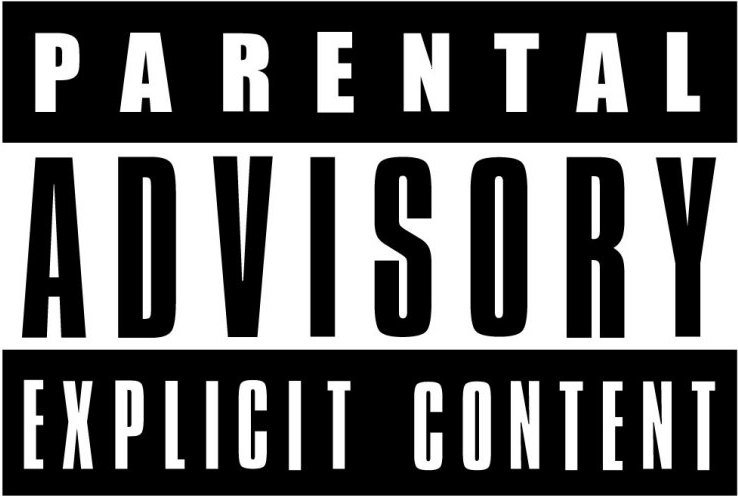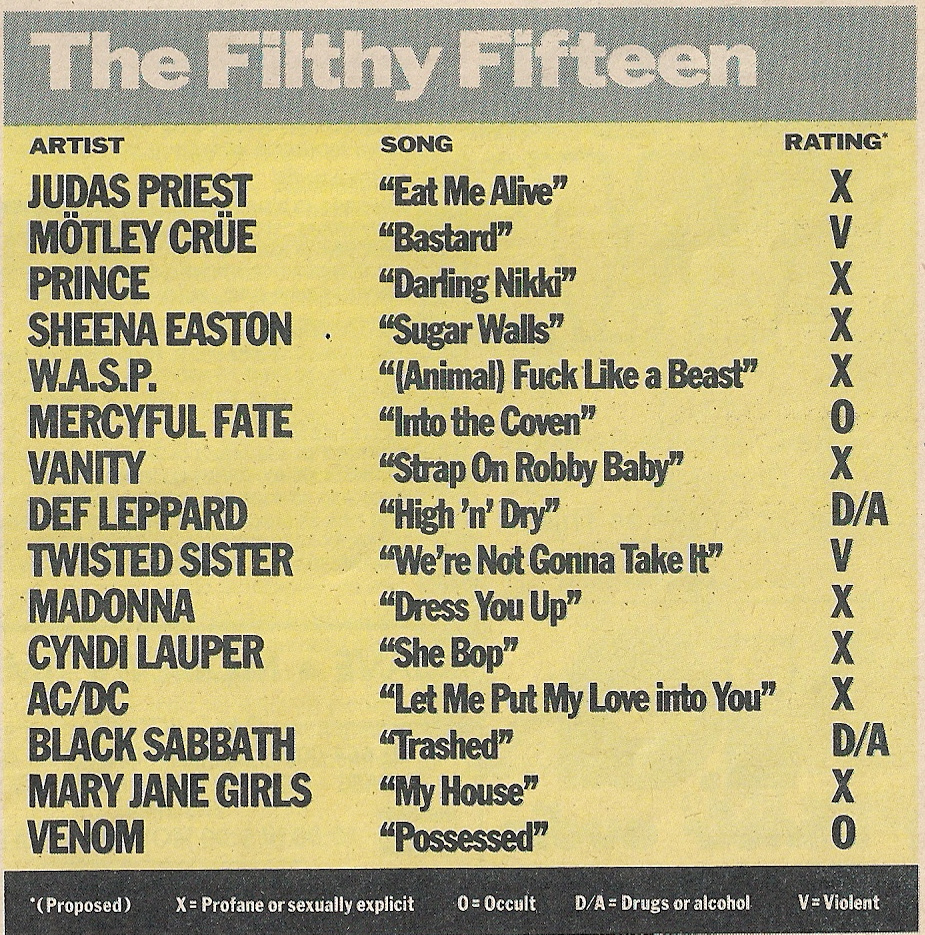It’s small, black-and-white, and has raised more rebellious teenagers than actual parents ever did. Yes, we’re talking about the legendary “Parental Advisory: Explicit Content” sticker — the accidental rock ‘n’ roll merit badge.
But how did a boring government-style warning become the hottest marketing tool in music history? For that, we have to thank one woman, one Prince song, and a list so ridiculous it could’ve been printed on the back of a Trapper Keeper.

When Prince Made Tipper Gore Blush
The year was 1984. Tipper Gore, wife of then-senator Al Gore, bought her daughter Prince’s Purple Rain. Instead of wholesome ballads about birds crying, she stumbled across Darling Nikki — a song with the line about a girl “masturbating with a magazine.”
Tipper’s jaw dropped, her pearls clutched, and America’s moral crisis was born. She quickly formed the Parents Music Resource Center (PMRC) — basically a book club of Washington wives, except instead of Chardonnay and gossip, they fought the evils of heavy metal, pop, and anything that sounded fun.
The Filthy Fifteen: Parental Panic Playlist
To really drive the point home, the PMRC came up with the infamous Filthy Fifteen list — the fifteen most corrupting songs in America.
Judas Priest – “Eat Me Alive” (violent!)
Prince – “Darling Nikki” (sexually explicit!)
Sheena Easton – “Sugar Walls” (way too explicit for wallpaper!)
W.A.S.P. – “Animal (F* Like a Beast)”** (self-explanatory!)
Venom – “Possessed” (Satan said hi)
…and even Cyndi Lauper’s “She Bop”, which, fun fact, is literally about masturbation.
Each track got a scarlet letter: X for sex, V for violence, O for occult, D/A for drugs and alcohol. Basically, the PMRC reinvented the iTunes “genres” tab, except scarier.
Teenagers looked at the list and thought: Wow, that’s the best mixtape I’ve ever seen.

Congress vs. Rock ‘n’ Roll
In 1985, the U.S. Senate held actual hearings on this. Picture it: gray-haired politicians listening to W.A.S.P. while trying to keep a straight face.
Highlights included:
Dee Snider of Twisted Sister rolling into Washington in his tank top and verbally suplexing the committee.
Frank Zappa delivering sarcasm so sharp it could’ve cut vinyl.
Senators awkwardly saying the word “masturbation” into microphones. Democracy in action.
Birth of the Sticker (and Its Glorious Backfire)
After all the drama, the Recording Industry Association of America (RIAA) caved. They introduced the “Parental Guidance” sticker, which by 1990 evolved into the bold Parental Advisory: Explicit Content label we know today.
The idea was simple: warn parents, scare kids. The result? The exact opposite.
If an album had that sticker, kids wanted it more. No one wanted the “clean” version. Bands wore the label like a badge of honor. Even Walmart refusing to stock explicit albums only made them cooler. Suddenly, you weren’t dangerous if you didn’t have the sticker.
Streaming Killed the Sticker Star
Fast forward to now: Spotify just drops a tiny gray “E” next to explicit songs. It’s practical, but it doesn’t scream rebellion. Nobody has ever gotten grounded for downloading a track with a lowercase “e” on it.
Meanwhile, the Parental Advisory sticker lives on as pop-culture art — plastered on T-shirts, memes, and tattoos of people who still think Limp Bizkit was a menace to society.
The Irony
The PMRC wanted to protect America’s youth. Instead, they gave us the most iconic marketing symbol in music history. The Filthy Fifteen wasn’t a blacklist — it was a shopping list. And the Parental Advisory sticker didn’t kill explicit music; it made it immortal.
So thank you, Tipper Gore. Without you, teenagers in the ’80s might never have discovered the sheer joy of buying an album their parents hated.
